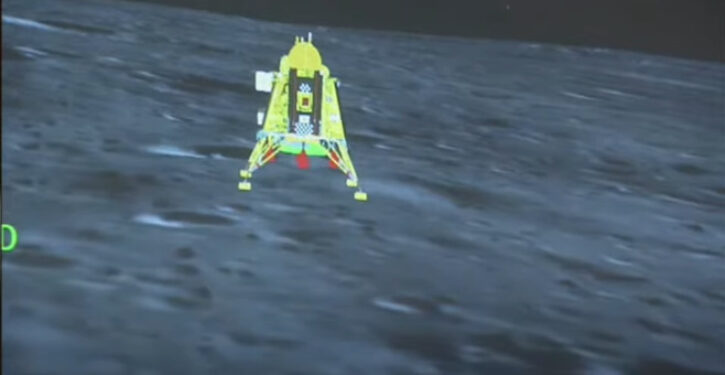
India’s solar probe has entered the sun’s orbit after a four-month journey, a success for the space program of world’s most populous nation.
The Aditya-L1 mission has an array of instruments to measure and collect images of the sun’s outermost layers.
India’s technology minister, Jitendra Singh, proclaimed that India’s probe reached its final orbit “to discover the mysteries of sun-Earth connection.”
NASA and the European Space Agency have sent numerous probes to the sun, starting with NASA’s Pioneer program back in the 1960s.
India’s mission is the first by any Asian country to be put in orbit around the sun.
India’s prime minister, Narendra Modi, said, “It is a testament to the relentless dedication of our scientists. We will continue to pursue new frontiers of science for the benefit of humanity.”
Aditya, named after a Hindu sun god, has traveled about a million miles from Earth – still only 1% of the distance between Earth and the sun. It is now at a point where the gravitational forces of the Sun and the Earth will cancel each other out, letting it remain in a stable orbit around the sun.
The orbiter, which cost about $50 million, will study coronal mass ejections, a recurring phenomenon in which huge discharges of plasma and magnetic energy are ejected from the sun’s atmosphere. Such bursts are so powerful they can reach the Earth and disrupt the operations of satellites.
The mission aims to reveal the dynamics of various puzzling phenomena on the sun by imaging and measuring particles in the sun’s upper atmosphere.
India space progam has a small budget compared to NASA, although it has grown substantially since India launched a probe to orbit the moon 15 years ago. Last August, India became the first nation to land an unmanned space craft near the mostly unexplored south pole of the moon, and it also became the fourth nation to land a spacecraft on the moon.
India became the first Asian country to put a space vehicle into orbit around Mars in 2014 and it anticipates sending a manned mission into Earth’s orbit later this year for a three-day period.
India and Japan plan a joint mission to send a probe to the moon in 2025 and an orbital mission to Venus by 2026.
Why did India go the moon? CNBC explains that
The lunar south pole has emerged as a place of exploration interest thanks to recent discoveries of traces of water ice on the moon. India previously attempted a lunar south pole landing in September 2019, but a software failure caused the Chandrayaan-2 mission to crash into the surface.
″[The south pole is] really a very interesting, historical, scientific and geologic area that a lot of countries are trying to get at that can serve as a base for future exploration,” Wendy Cobb, professor of strategy and security studies at the U.S. Air Force School of Advanced Air and Space Studies, told CNBC.
Cobb added that the discovery of water on the south pole of the moon is “really important for future exploration,” as it could serve as a source of fuel for rockets and spacecraft.



